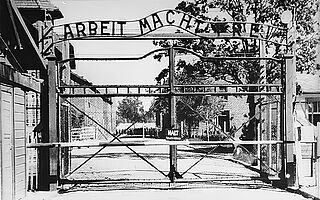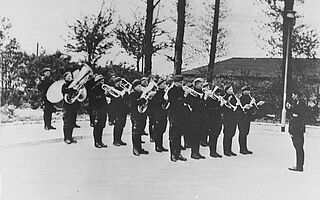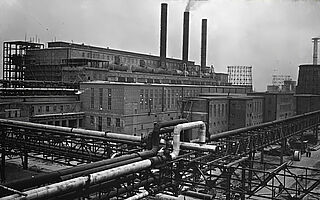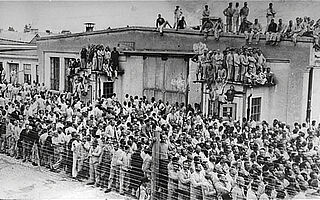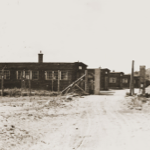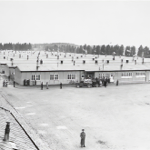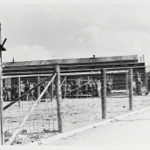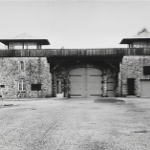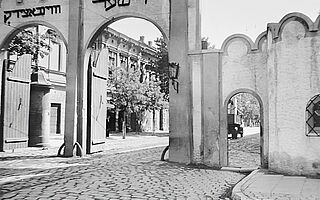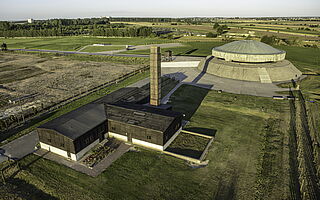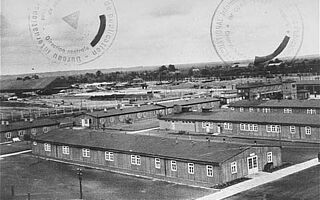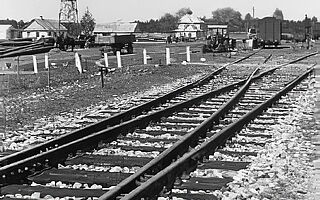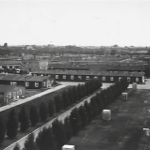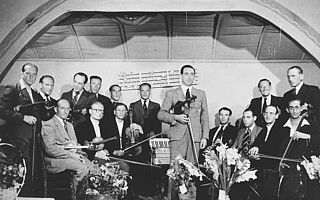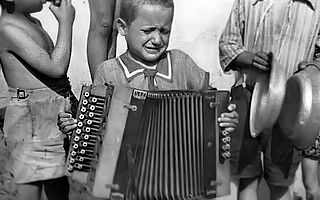Places
Selezionare la categoria
Auschwitz
In 1940, Reichsführer-SS Heinrich Himmler ordered prisoners to begin construction of a camp at Oswiecim. Auschwitz was planned as a multi-purpose complex of three main camps and dozens of smaller sub-camps, and in total around 1.25 million people were killed here, more than ninety percent of whom were Jewish.
Belzec
Experiments in Bełżec researched the most efficient ways of transporting, processing and killing Jews. Camp I housed the administration buildings and staff quarters, and Camp II contained the gas chambers.
Bergen-Belsen
Few documents survive to tell us about musical life in Bergen-Belsen. Scattered witness testimonies and diaries testify to the fact that informal music-making occurred, either in the form of singing, or performing on instruments when inmates were able to keep these with them.
Börgemoor
Börgermoor was built in June 1933 for 1,000 inmates and was closed as a concentration camp the following year. At roll call, during marching, exercises, and forced labour, the guards would regularly mandate the singing of songs as a parallel of their own military traditions.
Buchenwald
Over the course of its existence Buchenwald held many well-known figures of the German entertainment world, including Jura Soyfer, Hermann Leopoldi, Fritz Löhner-Beda and Paul Morgan. The official camp song ‘Buchenwaldlied’ was as much loved by the prisoners as by the guards who forced them to sing it.
Buna-Monowitz
Buna-Monowitz was a Nazi concentration camps and labor camp operating from 1942–1945. A camp orchestra was created at Buna during the first months of its operation. They were forced to play marches at the camp gates during the daily entry and exit of the workers and were required to give private concerts for the SS.
Dachau
Dachau’s use of music as a form of torture made the most extensive use of radio to indoctrinate and explicitly to torture prisoners. There were also, however, secret choirs and musical groups, string quartets and orchestras and cabaret shows.
Dora-Mittelbau
Dora-Mittelbau had an orchestra, by order of the SS, which played during roll call and probably for the entertainment of officers and guards as well. In addition, the prisoners entertained themselves with singing and music in their small allocations of free time.
Drancy
The Drancy internment camp, the largest transit camp in France. Although there is little information about music and musicians, there was generally a wide variety of cultural activities, including concerts and literary evenings. Between 1941 and 1943, there were 41 successful escapes, and an untold number of unsuccessful attempts.
Ebensee
One of the sub-camps of Mauthausen, Ebensee was opened on 18 November 1943. Of the approximately 27,000 prisoners brought here, more than 8,000 died before the camp’s liberation on 6 May 1945. There is very limited information about music in Ebensee, however, there was some form of official camp band.
Flossenbürg
The international make-up of the Flossenbürg prisoner population contributed to a rich and diverse musical scene. Early in 1940, a small group of Czech men began to perform for fellow prisoners. The prisoners were soon allowed to form an official band, and as the Nazi net expanded across Europe, the band kept expanding.
Gross-Rosen
Opened in August 1940 as a sub-camp of Sachsenhausen, located near a stone quarry in lower Silesia, Gross-Rosen was to expand into a large camp complex with a vast network of its own sub-camps. Music was part of its daily life and there is evidence that the SS ordered cultural events for the purpose of distracting the camp population.
Gurs
Established as an internment centre for refugees from the Spanish civil war, the Gurs concentration camp was located in an isolated south-western corner of unoccupied France. Despite the inhospitable living conditions, a rich cultural life and support network is said to have developed amongst Gurs inmates.
Gusen
Construction on Gusen began in December 1939, and the first inmates arrived in the spring of 1940 and held primarily political prisoners and Nazi opponents. Most of the camp's musicians were Polish, and their numbers rose when, in 1944, many members of the Warsaw Philharmonic were deported there.
Janowska
Almost no records survive of musical activity in Janowska. The information that does exist relates largely to acts of musical torture on the part of the camp command. A camp orchestra was established with Jewish musicians from Lvov, forced to perform during selections, mass shootings, and public beatings.
Kaiserwald
There are surviving records of musical activity in Kaiserwald including organised shows for the prisoners. In the latter part of the camp’s existence, the commander also allowed regular Sunday concerts featuring a makeshift band playing an out-of-tune piano along with several violins and an accordion.
Kovno
The Kovno ghetto was divided into two sections and sealed on 15 August 1941, enclosing about 30,000 Jews. Within five years, the Jews of Kovno had almost all been killed: shot in the city, dead of starvation and illness inside the ghetto or deported to concentration and death camps.
Kraków
The Kraków ghetto was officially established in March 1941. Two major camps were constructed nearby: the labour camp Plaszow, and the death camp Auschwitz, only forty miles away. The Kraków Jewish community included several important artists and musicians.
Lichtenburger Lagerlied ♫
Lichtenburg was a Nazi concentration camp, housed in a Renaissance castle in Prettin, near Wittenberg in the Province of Saxony. Along with Sachsenburg, it was among the first to be built by the Nazis, and was operated by the SS from 1933 to 1939.
Majdanek
In Majdanek, Soviet prisoners and the community of Slovakian Jews were best known for their musical activity. There is evidence that both of these groups frequently sang the songs of their homeland in their bunkers at night and while working, although this was forbidden.
Mauthausen
The first camp to be built outside of the boundaries of Germany, Mauthausen was created after the Anschluss in March 1938, near a stone quarry three miles from the small town of Mauthausen in upper Austria. It is remarkable that there was a distinct musical world there.
Musical Propaganda at Oranienburg
Sachsenhausen or Sachsenhausen-Oranienburg was a Nazi concentration camp in Oranienburg, used primarily for political prisoners from 1936 until May 1945. From April to August 1933, journalists and photographers were given tours of the camps by the camp leadership for propaganda purposes.
Natzweiler
The labour camp Natzweiler-Struthof was set up in the spring of 1941 in Eastern France, and was the only Nazi-built and -run concentration camp on French soil. When the camp commander of Dachau, Egon Zill, was transferred to Natzweiler, he had the members of one of the Dachau bands, along with their instruments, transported with him.
Neuengamme
Originally established in December 1938 as a sub-camp of Sachsenhausen, Neuengamme was located in a brick factory near Hamburg. A camp orchestra was demanded by the camp commander, who on a previous visit to Auschwitz had been impressed by the prisoner band that he had heard.
Ravensbrück
At Ravensbrück Nazis used large loudspeakers as a way to harass and manipulate prisoners. On Sunday afternoons, during free time, the guards broadcast music at maximum volume and women were forced to march in the main clearing and sing German songs.
Riga
For most of Riga's Jews, the time in the ghetto was to be short: set up in October 1941, it was almost entirely liquidated by early December to make room for deported Jews from the Reich.
Sachsenhausen
The concentration camp Sachsenhausen was established in April 1936. One of the most prominent and tormenting elements of life in the camp was forced music-making. Prisoners were often forced to sing while doing harsh physical labour.
Skarzysko-Kamienna
An extensive underground cultural and musical world thrived at Skarzysko-Kamienna. Inmates would sing folk songs together, usually in Yiddish but also in Polish. In the spring of 1944, formal public concerts became a part of camp life, after performers arrived from Majdanek who wanted to set up a performing troupe.
Sobibor
At the beginning of its operation Sobibór did not have a camp orchestra. Instead, arriving trains were blasted with music from loudspeakers. An orchestra was established later on and prisoners were forced to participate in ‘cultural activity’ - torture and humiliation.
Theresienstadt
Theresienstadt has become almost synonymous with 'music of the Shoah' because of the qualitative and quantitative level of the musical life there. The propaganda film Theresienstadt. Ein Dokumentarfilm aus dem Jüdischen Siedlungsgebiet was made there in 1944.
Treblinka
Treblinka had a surprisingly well-developed musical life, most of which existed for the entertainment of the SS or for the deception of the victims. Probably the best-known musical ensemble of the Operation Reinhard death camps is Artur Gold’s orchestra.
Vilna
Vilna’s renowned theatrical tradition continued in the ghetto, where several theatres existed during its two-year existence. The first concert of its symphony orchestra, conducted by Jacob Gerstein, took place on 18 January 1942.
Warsaw
The Warsaw ghetto offered more performances than any other Nazi internment centre. It had a symphony orchestra, five theatres, chamber groups, choirs and cafés, and numerous concerts and informal musical events.
Westerbork
Westerbork was situated in a remote area in the north of the Netherlands close to the German border and was originally built in 1939 as a refugee camp. One of the most unique facets of life in Westerbork was the remarkable cultural scene that developed there, including what some characterised as the best cabaret in all of Europe.








